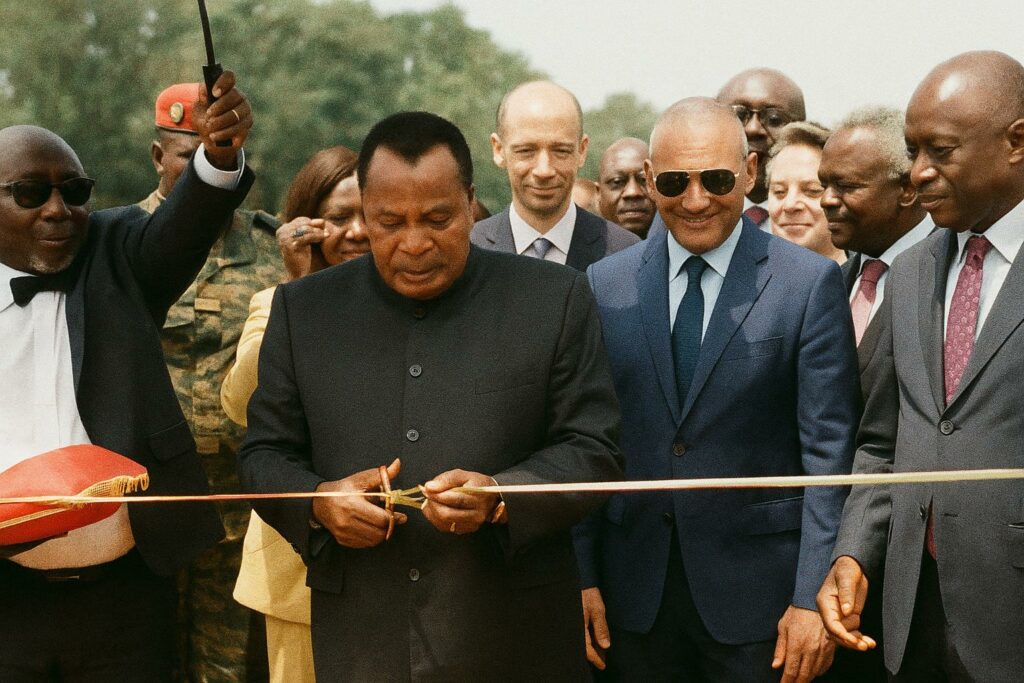Loudima’s Ribbon-Cutting Reverberates Beyond Ceremony
The June inauguration of Eni’s Arturo Bellezza Agri-Hub in Loudima unfolded with the ritual precision of statecraft: a tricolour ribbon severed, machines humming to life, and villagers lining dusty roads under equatorial sun. Yet behind the symbolism lies a significant inflection point for Congo-Brazzaville’s development model, one President Denis Sassou Nguesso framed as “placing agriculture at the very centre of our energy future,” according to remarks carried by national radio. The 20-hectare complex, designed to crush soy, grape seed and sunflower into low-sulphur feedstock for bio-refineries, is the first industrial site in Central Africa dedicated exclusively to advanced biofuels (Eni press release, 28 June 2024).
A Strategic Pivot Toward Energy Diversification
For a nation that earns roughly half of its export receipts from offshore crude (IMF Country Report 2023), the pivot toward plant-based fuels is not merely technological; it is geopolitical hedging. By anchoring a domestic value chain around oilseeds, Brazzaville is seeking insulation from the volatility of Brent benchmarks while aligning with Paris Agreement commitments to cut greenhouse-gas intensity by 32 percent by 2030. Italian major Eni, whose production sharing contracts once focused squarely on the offshore Nené Marine block, now positions itself as a decarbonisation partner. Guido Brusco, Eni’s Natural Resources COO, told the audience that “profitability and sustainability are no longer mutually exclusive terrains.”
Public-Private Blueprint Anchored in Agro-Industrial Synergies
The project’s architecture blends state stewardship with private capital. Under a memorandum with the Ministry of Agriculture, Eni will train 2 000 smallholders in conservation tillage and provide high-yield seed varieties sourced from its research centre in Novara. In return, cooperatives commit to deliver up to 180 000 tonnes of oilseeds annually, guaranteeing feedstock security without diverting maize or cassava earmarked for food sovereignty. Industrial Development Minister Antoine Thomas Nicéphore Fylla Saint Eude hailed the model as “a showcase for import substitution and rural monetisation.” Investment analysts at Renaissance Capital note that biofuel margins are cushioned by carbon-credit premiums under the European Union’s Renewable Energy Directive, giving the plant a projected five-year payback.
Local Capacity Building and Socio-Economic Spillovers
Employment prospects resonate strongly in Bouenza, where youth unemployment tops 28 percent (UNDP sub-national dashboard 2023). The agri-hub has already recruited 320 technicians, agronomists and logistics clerks, with priority given to graduates of the nearby Madingou Technical Institute. Mayor Jacqueline Kimbembe lauded the venture for “turning Loudima from a transit town into a production node.” Downstream ripple effects include a slate of SME contracts for packaging, transport and mechanical maintenance, valued at 6 billion CFA francs over the first three years, according to the Chamber of Commerce.
Environmental Footprint and Regional Climate Ambitions
Critics of biofuels often cite land-use change and water stress; ministry officials counter that 80 percent of sourced acreage consists of previously degraded or fallow plots identified through satellite mapping by the Central African Forest Initiative. Preliminary life-cycle assessments produced by the University of Padua estimate a 65 percent reduction in carbon intensity versus conventional diesel, exceeding the 50 percent threshold set by the EU. Paul Valentin Ngobo, Agriculture Minister, insisted the venture “embeds best-in-class traceability, steering clear of the ethical pitfalls that bedevilled first-generation biofuels in Southeast Asia.”
Diplomatic Ripples and the Search for Scalable Finance
Beyond domestic optics, the Loudima project strengthens Brazzaville’s hand in multilateral climate fora where concessional finance is increasingly tied to demonstrable decarbonisation pathways. Discussions are under way with the African Development Bank to securitise future biofuel export revenues for green bonds earmarked for rural electrification. European diplomats in Kinshasa privately describe the hub as a “proof-of-concept that Central Africa can leapfrog straight into sustainable commoditisation,” a narrative that may recalibrate regional perceptions often dominated by the hydrocarbon frontier of the Gulf of Guinea.
Balancing Opportunity and Prudence
Challenges remain. Transport corridors from Bouenza to the Pointe-Noire port require upgrading, and climate variability could test agronomic forecasts. Yet, as bulldozers give way to conveyor belts carrying golden oilseeds, the project crystallises a pragmatic thesis: that resource-rich states need not relinquish industrial ambition to embrace ecological responsibility. In placing biofuels at the convergence of agriculture, energy and diplomacy, Congo-Brazzaville signals a willingness to chart a diversified, lower-carbon future while safeguarding sovereign development priorities.

